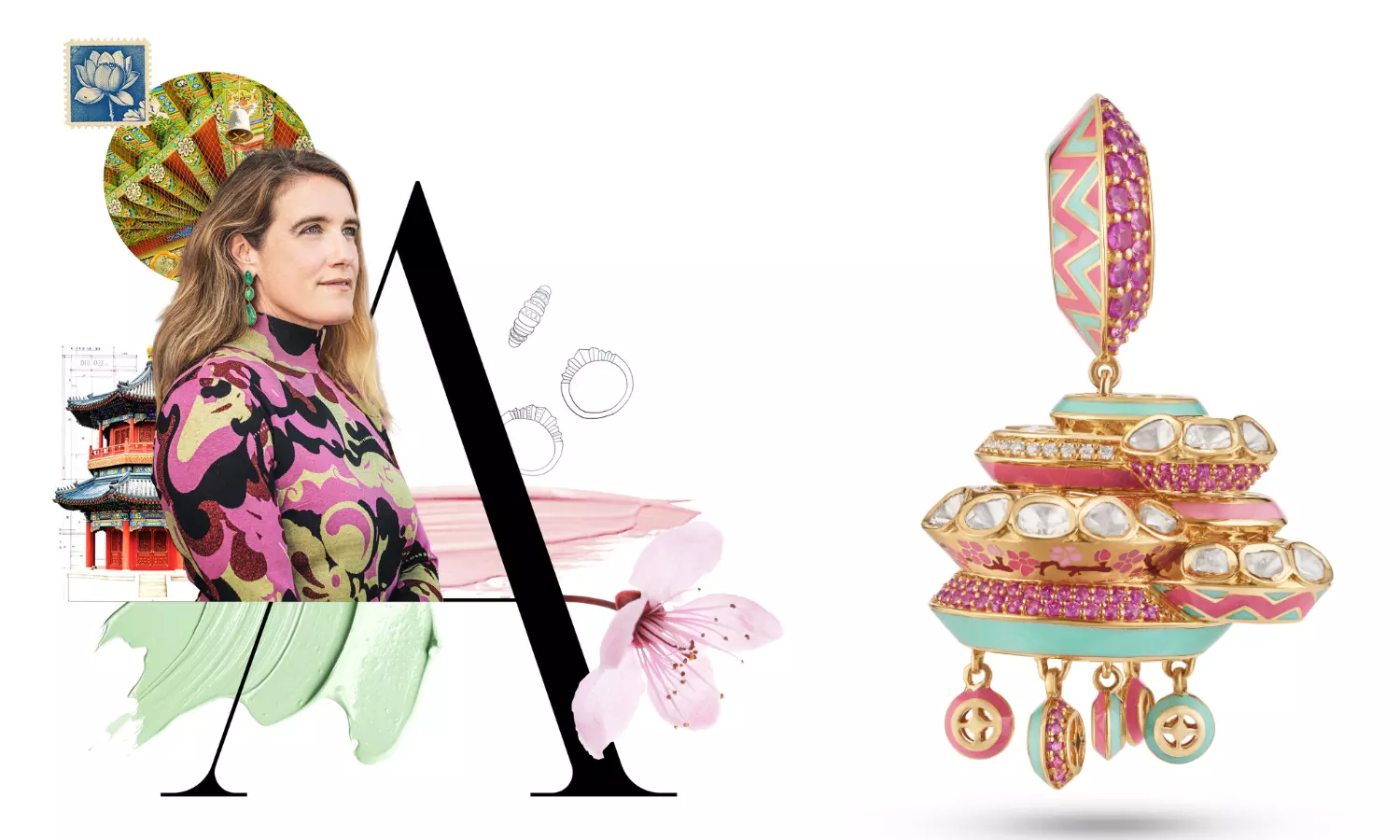By Reshmi AR
Acclaimed jewellery designer Alice Cicolini shares insights into her first-ever collaboration with Zoya, the House of Tata’s luxury jewellery maison. Inspired by the adventurous life of Alexandra David-Néel, this limited edition collection embodies the perfect blend of heritage and modernity.Cicolini praises Zoya for its commitment to master craftsmanship, attention to detail, and storytelling, aligning perfectly with her own design philosophy.Excerpts from an exclusive interviewHow did Alexandra David-Néel’s life and travels inspire this limited edition collection and what aspects of her story resonated with you?Alice: Alexandra David-Néel was the perfect heroine for the collection that I have created with Zoya. She was a great adventurer at the turn of the century, at the end of the Victorian era. What I love about Alex’s story is that she was a passionate woman, deeply excited by global culture, yet equally authentic and committed to truly understanding the places she travelled to. There was so much great energy in her journey—an ideal starting point to talk about the Zoya woman and the very essential qualities of femininity that have always interested me as a designer.Could you talk about your design process for this collection, particularly in incorporating hand-drawn motifs and cultural symbolism?For this collection, we closely studied traditional Indian jewellery forms—especially the jhumka—and used that as a springboard to explore Tibetan architecture. The layering of patterns in their buildings really inspired me; the abundance and juxtaposition of form was a key starting point. I am fascinated by how pattern and form shift across vast landscapes. My first collection was inspired by the Silk Route, and a lot of what I do involves juxtaposing patterns and forms from different cultures to bring a freshness to ancient, timeless shapes. A recurring motif across the pieces is the cherry blossom. Blossom is personal to me. I am a May baby, and it signals a special time of year. Symbolically, it’s about the return of spring and the hope of abundance ahead. I love that sense of lightness, freshness, and renewal—very much what this collection is about: the meeting point between heritage and modernity.How do the various motifs and symbols in the collection—such as Japanese cherry blossoms and Tibetan scrollwork—contribute to the narrative of each piece?The pieces from the collection really encapsulates what we were exploring. They use the traditional jhumka shape, but reimagined with layered, three-dimensional forms. The layering is asymmetric, which is something you’ll find a lot in my work—it moves away from traditional symmetry to something more fluid and modern.If you notice, in the pieces in the collection, the back is as beautiful as the front; in theory, you could wear it either way. The pattern on the back of one of the earrings draws from traditional Japanese obi, though adapted and refined. Then, on the front, you find the delicate cherry blossom—subtle variations in tone highlighted by pink sapphires used sparingly for nuance. What was it like collaborating with Zoya, and how did the brand’s legacy and craftsmanship influence your creative vision?I always talk about my three Cs—collaboration, craftsmanship, and colour—rather than the traditional four Cs of stones. When I first connected with Zoya, it became clear very quickly that we were aligned on core ideas: storytelling, a commitment to master craftsmanship, and attention to detail. As brands, both of us speak directly to women—women buying jewellery for themselves; a woman who is deeply interested in how things are made, and that made the collaboration feel seamless right from the beginning.How do you see this collection redefining the use of enamel in fine jewellery, and what innovations are you most excited about?One of the clear inspirations in the collection is the tradition of Kundan Meena from Rajasthan. It’s where I first began—working with an exceptionally talented master craftsman in Jaipur. With this collection, we have evolved that legacy to suit women who live busy, active lives and want to wear their jewellery every day. We have prioritised lightness—allowing sculptural forms to feel easy and wearable. We also developed a durable enamel, letting women wear these pieces daily without worry. And we have explored unique colours—each hue mixed specifically for Zoya and matched to each individual piece rather than being created in bulk. Lastly, the setting of the uncut diamonds pays homage to traditional kundan work, but with a durability that meets the needs of Zoya’s woman. Your work often explores the intersection of heritage and modernity. How do you balance these elements in your design language?Good design is always about memory, talismanic value, and emotion—especially in jewellery. I think the dialogue between heritage and modernity is something most designers engage with. Fashion is cyclical whereas jewellery design, to me,…
